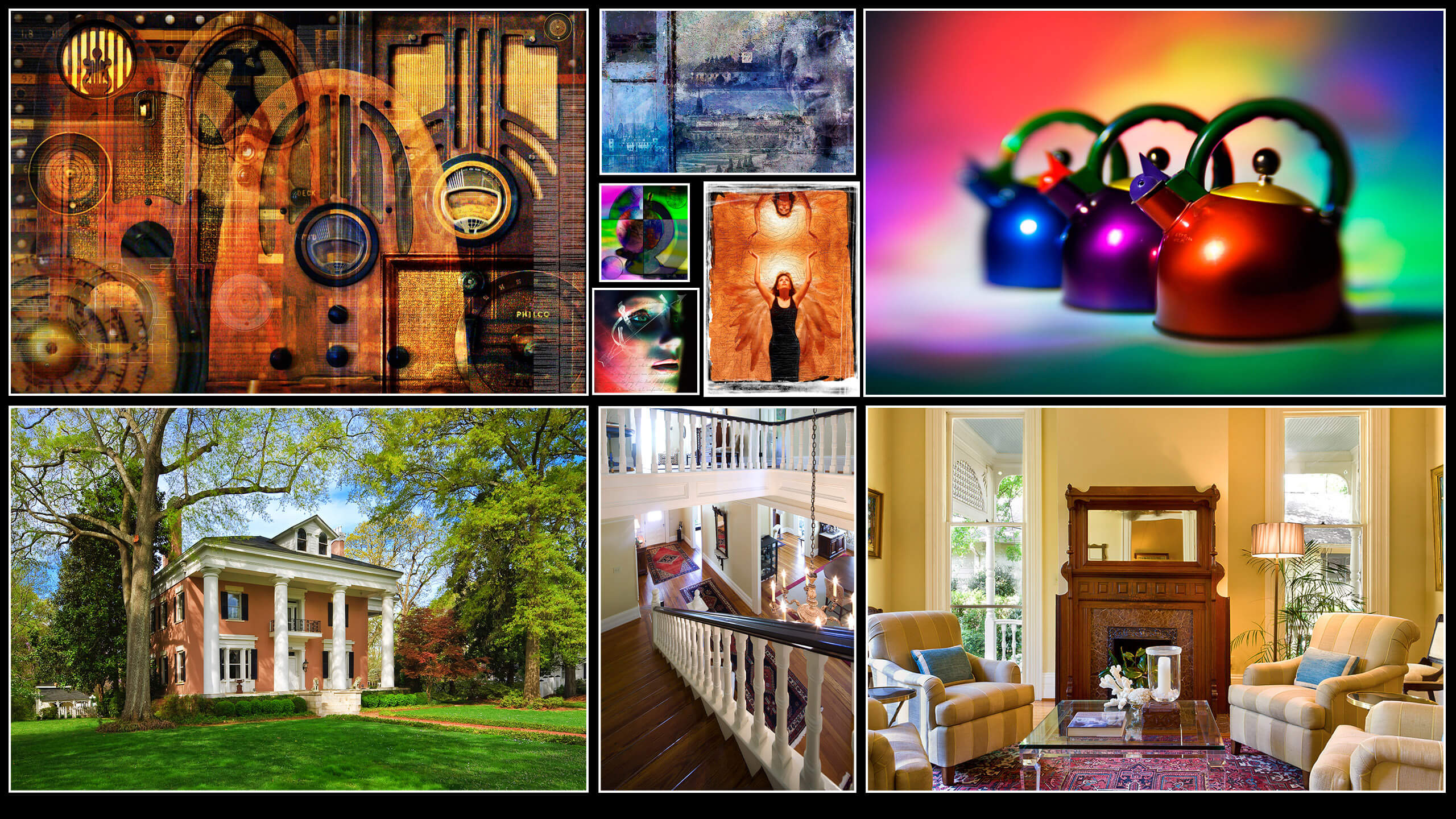“Getting it right in the camera was critical when I was shooting 8 by 10 film. There was no retouching. Back then I didn’t take pictures, I crafted photographs. Each one was a work of art that could take a day or more to create. I kept working this way when I moved to digital capture. The only time photographers make money is getting it right the first time” -Jim DiVitale
Jim DiVitale was an award-winning commercial photographer and photographic artist who loved helping other photographers. His work was held in high regard by his clients many of whom he worked with for decades.
Impact
Jim DiVitale started in photography in the tenth grade, quite by accident. The only art class left was photography. So he borrowed a camera.
He started combining negatives from his first roll of film into composites because he wasn’t satisfied with the results from just one negative in the enlarger. He made prints with montages of images. His photography teacher encouraged him to enter them into the South Florida Student Art Competition.
He didn’t think anything about it until a letter arrived from his congressman. His work was hanging in the Kennedy Center for the Performing Arts as part of an exhibition of high school photography. He was so excited about the letter that he said, “Mom, buy me a camera!”
He discovered the book Impact: Photography for Advertising by William Reedy. That convinced him that he wanted this as his life’s work. He bought an 8 by 10-inch wooden view camera.
He knew right away that he didn’t want to be a sports photographer or a portrait photographer. “I like shooting things…” he said. “I wanted to do commercial advertising photography.”
Digital pioneer
Jim DiVitale was a pioneer of digital imaging. Out of necessity, he mastered digital color control. The Internet was in its infancy then and the printing press was king when it came to getting photographs into mass distribution. Before digital, printing houses handled the color.
Color management works
“Color management before Photoshop 5.5 depended on rubbing your finger over a four-leaf clover,” Jim said. “Whoever had their finger on the file last, without a color reference, the color could shift.”
Jim DiVitale made an 8 by 10 color transparency from the RGB file so the printer would know what the file was supposed to produce. This took him out of the loop of responsibility for the color. The transparency cost $125.00 to make and it was cheap insurance on a press run.
When Photoshop 5.5 was released in early 1997, color management became the purview of photographers. By this time, Jim DiVitale was an expert in making sure what showed on his monitor appeared the same way on the printed page.
Jim DiVitale produced a 20-page book of his work to send to advertising agencies as a promotion to get more work. He did all of the digital pre-press work including the RGB to CMYK conversions. He was at the printer as his project was going on press. The press operator came to him and said they needed him on the press room floor.
Jim was nervous because this was a print run he had commissioned. He wondered what could possibly be wrong. The pressman said “I have been on this press for forty years. Every morning I have to adjust the press so the right side and the left side and the density match. I have a question for you… Your project has had no adjustments at all and it is coming out perfect on the first try. What did you do here? We are really confused.”
Jim replied with three words… “Color management works.”
Fine art
Jim DiVitale was approached to create photographs of historic homes of the Civil War era in Marietta, Georgia. He was not an architectural photographer. He believed that taking on challenges kept his core work fresh.
The book had already been written. Only the photographs were left. Jim took on the project pro-bono.
The 125 homes in the book took Jim DiVitale three years to photograph.
The 400-page book was published and led to an exhibition of the homes as fine art black and white prints. Jim DiVitale used his expertise in photography and color management to make large exhibition prints on an Epson 44″ printer.
“I learned a lot. I just wish the photos at the beginning were as good as the ones at the end of the project,” Jim said.
Awards
Jim DiVitale is a PPA Master Photographer, Master of Electronic Imaging, Photographic Craftsman and a Fellow of the American Society of Photographers.
He is an X-Rite Coloratti, and a sponsored instructor for Canon, Adobe and KelbyOne. Jim has lectured on digital photography and Photoshop at conferences and workshops across North America and Europe.
Jim’s award winning digital photography has been featured in many publications including Professional Photographer, Photoshop User Magazine, Photo District News, Digital Imaging, After Capture Magazine. Graphis Photo, Print, Archive Magazine, Create Magazine, Creativity, and Rangefinder.
His clients have included Cisco, Mizuno USA, Rubbermaid, William Carter Co, Toshiba, TEC America, Kenneth Cole, Bellsouth, BP Amoco, COX Media, Genuine Parts Company, JP Morgan Financial, and Coca-Cola USA.
Sources: Photofocus Podcast,
Read more stories about inspirational photographers in On Photography.
Source link




Leave a Reply